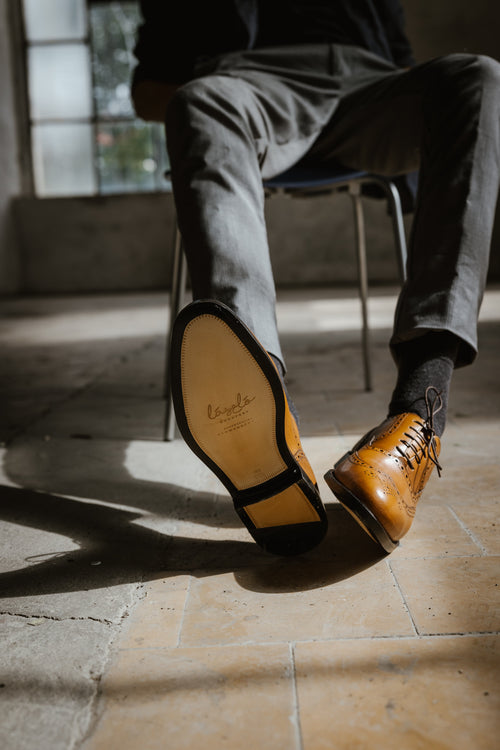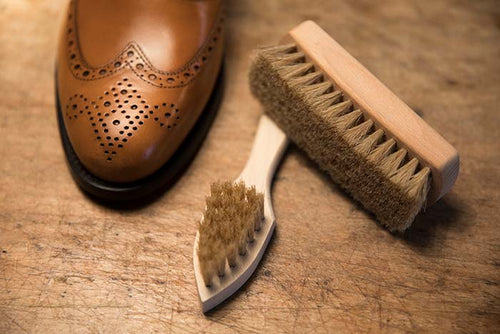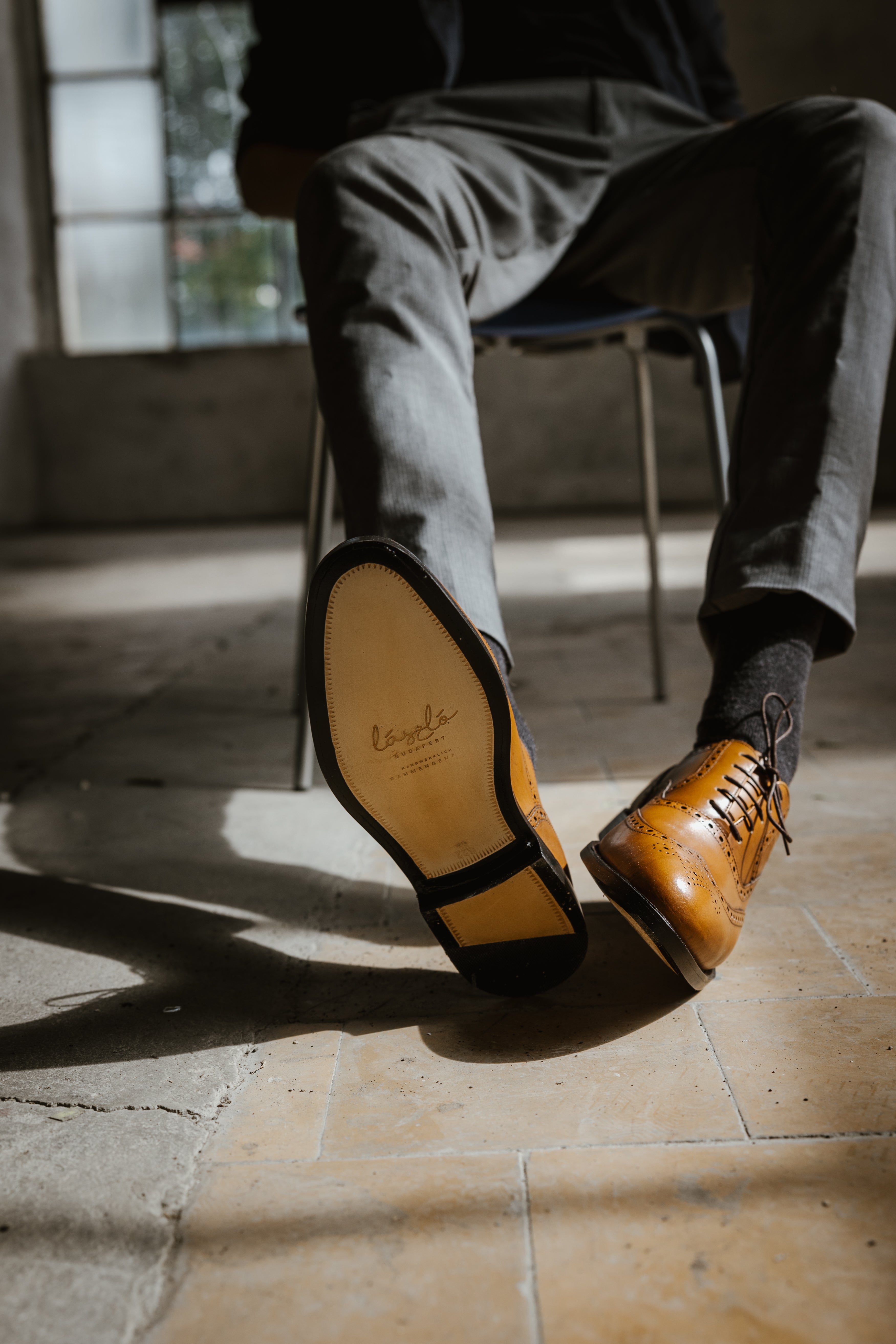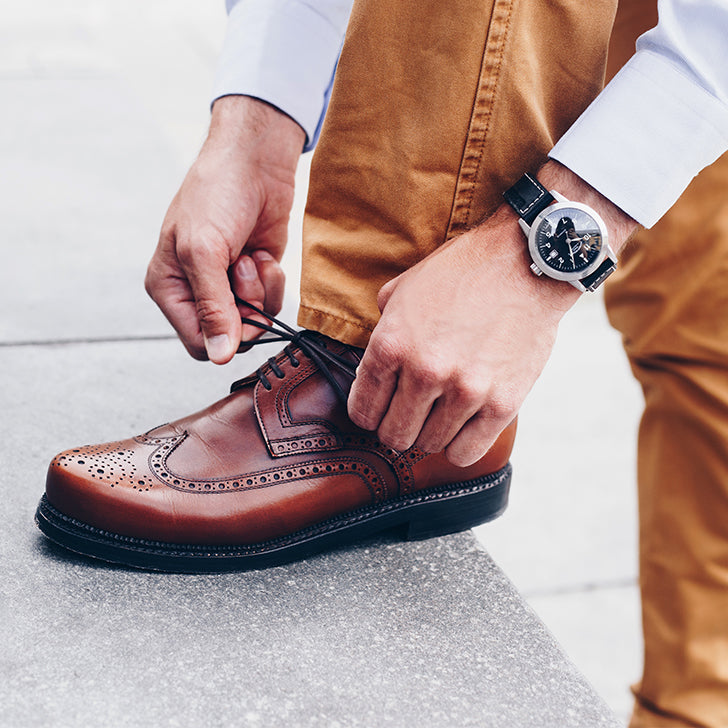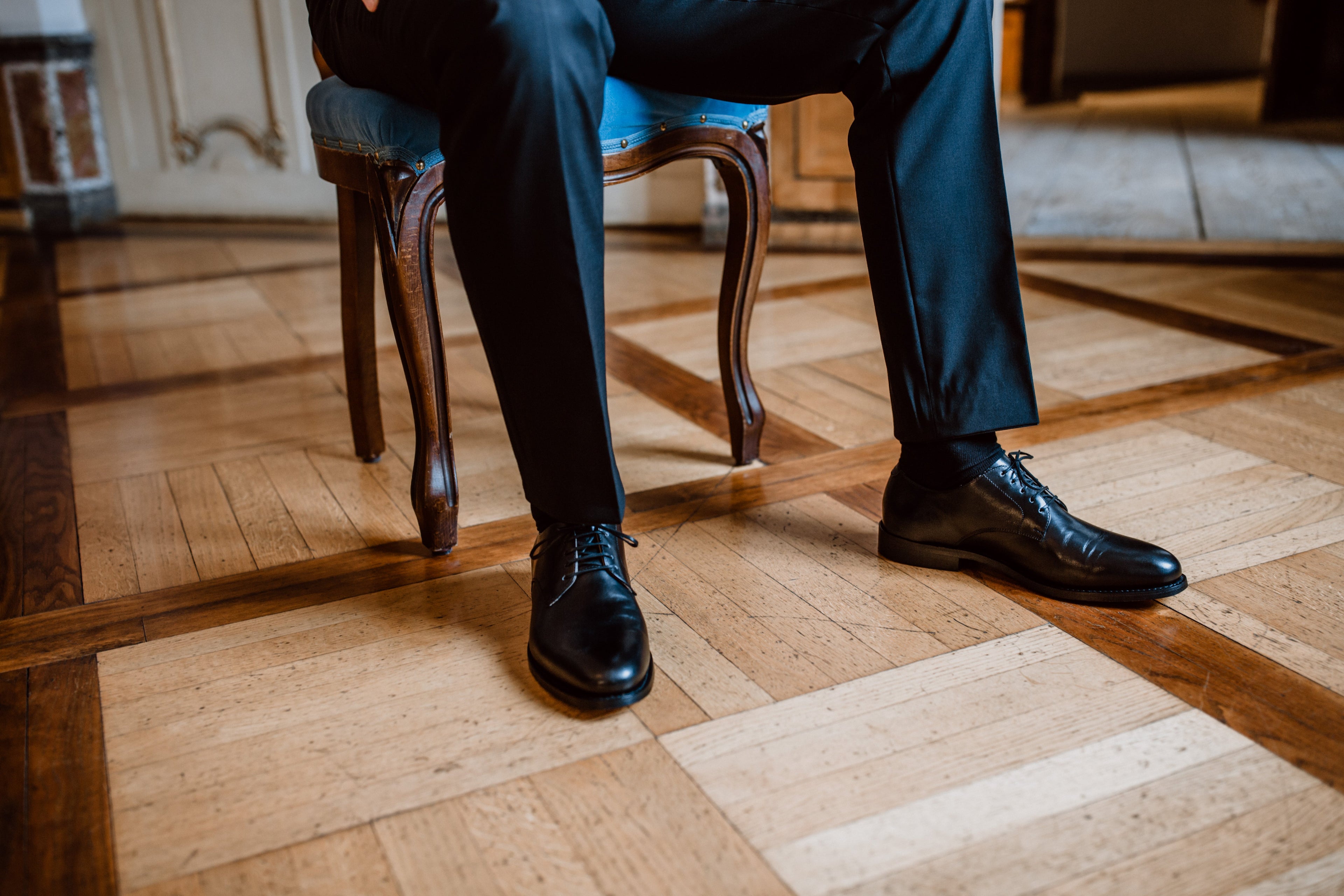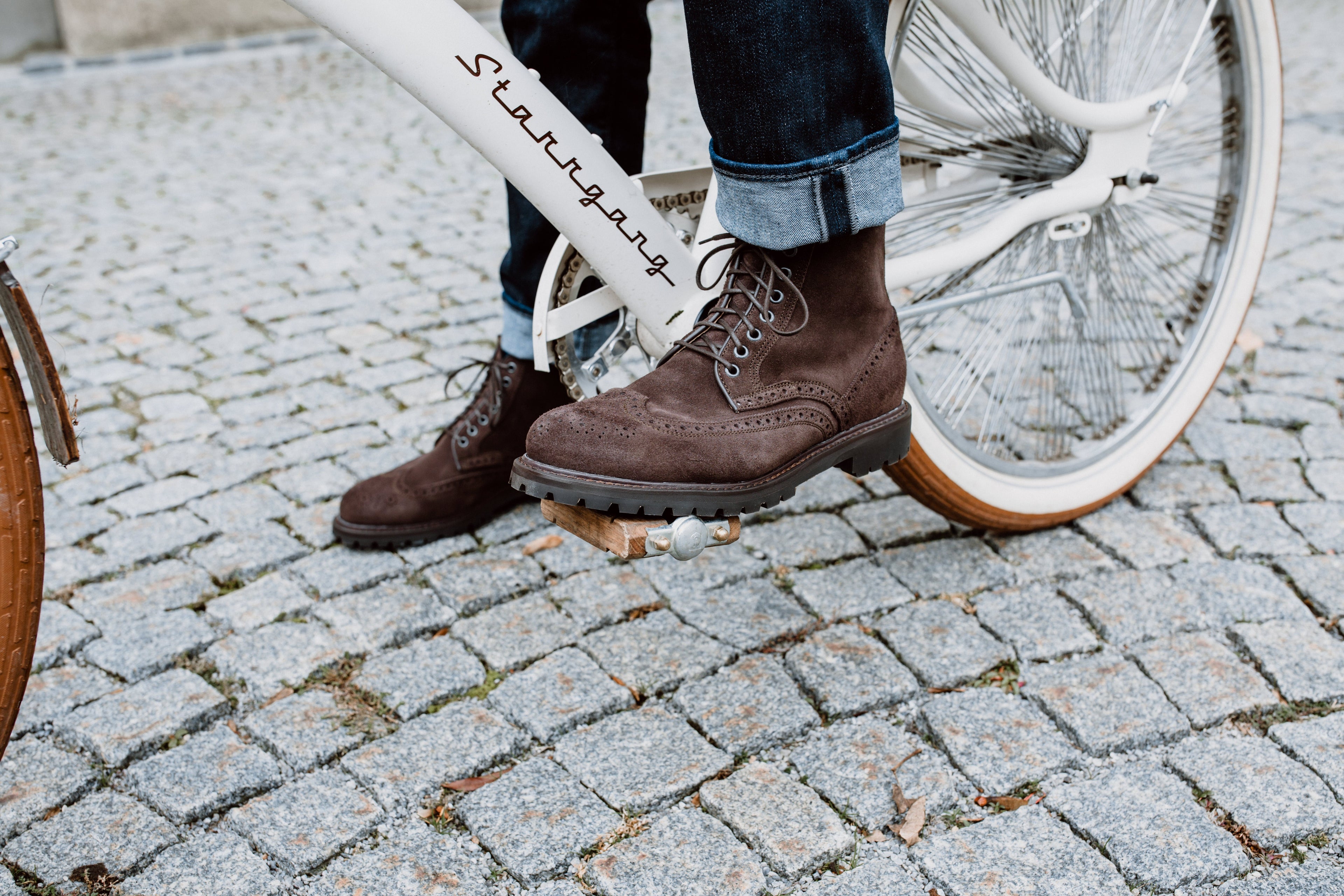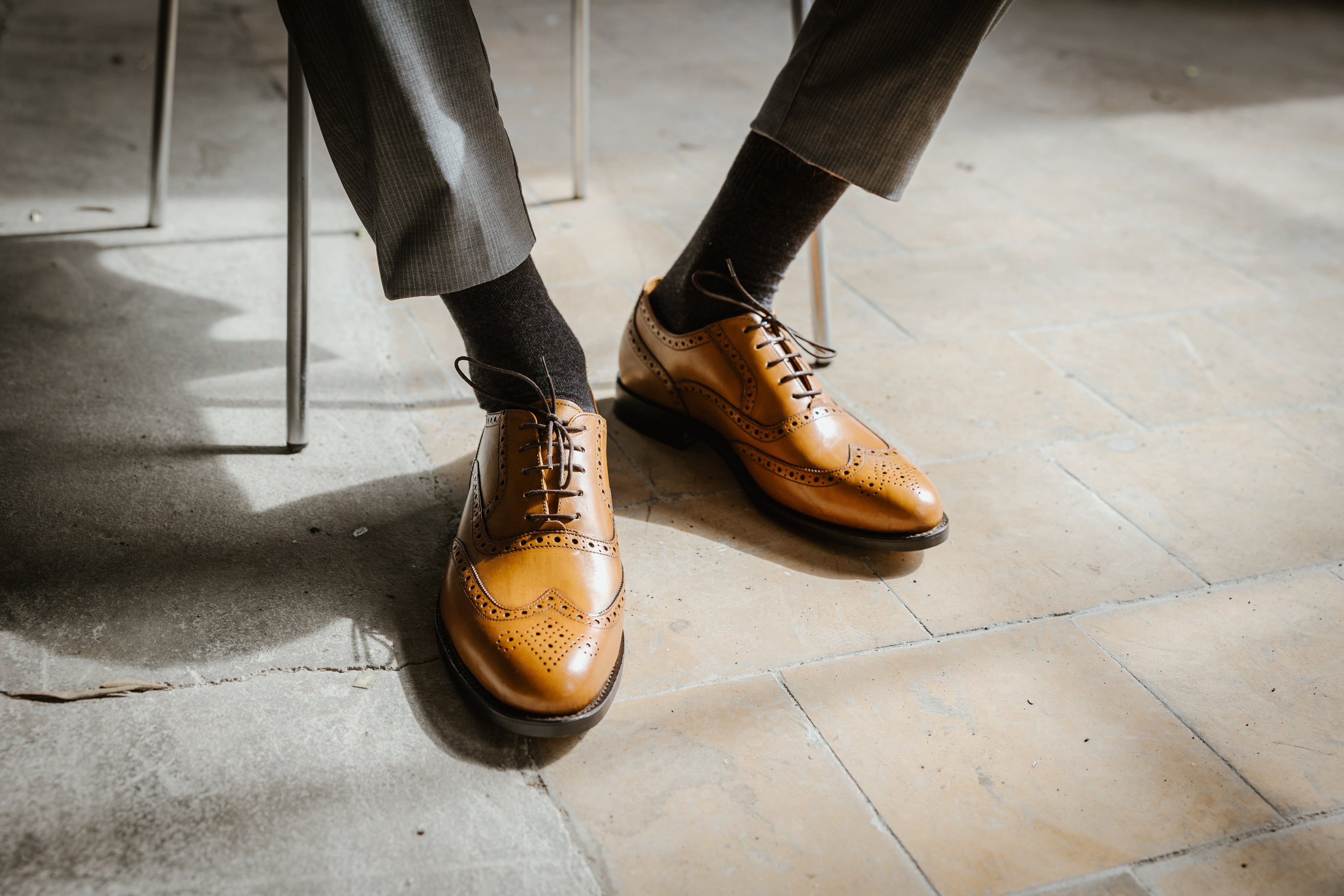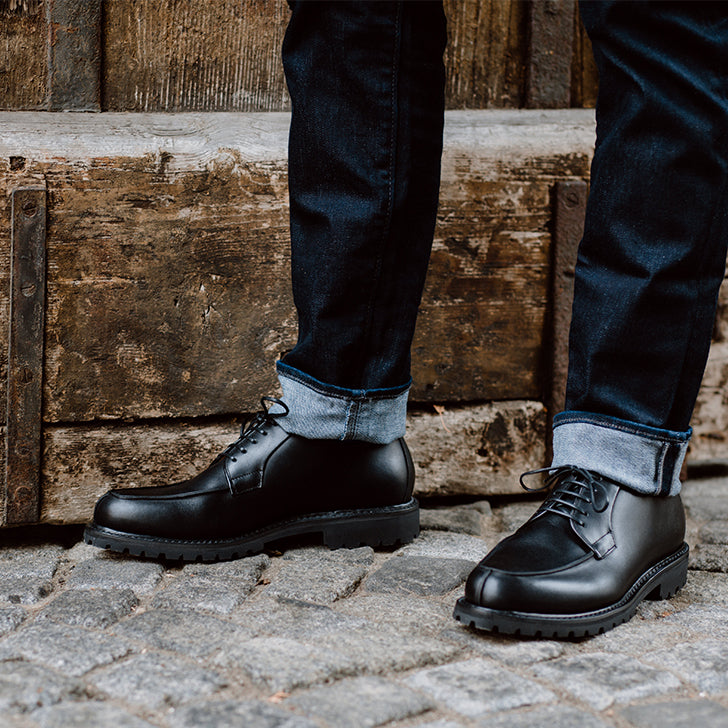Leisten

Die László-Leistenformen
Auf Basis dieser Prinzipien (siehe weiter unten) hat lászló-Budapest vier Leistengrundformen entwickelt, die wirklich passen und dabei unterschiedliche europäische Kulturtraditionen aufgreifen. Damit kommen sie verschiedenen Fußformen und Vorlieben entgegen.
- Form London, Typus englischer Leisten (Modelle George, Henry, Edward)
- Form Meran, Typus italienischer Leisten (Modelle Francesco, Alessio)
- Form Wien, Typus österreichsiche Leisten (Modelle Johannes, Julian)
- Form Budapest, Typus ungarischer Leisten (Modell Istvan)
Leistenform London
Sie mögen kein Aufheben um Ihre Person? Dann ist unser Leisten London, der an der englischen Klassik inspiriert ist, genau das Richtige für Sie.
Auf der Insel haben körpernahe Formen, die die Fußform nur sparsam verändern, Tradition. Der Vorfußbereich des Schuhs, der über unsere London-Form gearbeitet ist, wirkt dezent und unauffällig. Wie ein Maßanzug orientiert sich die lászló-Form London weitestmöglich an der natürlichen Anatomie, ohne diese markanter zu interpretieren.
Seriosität und Verlässlichkeit, die das Ego des Trägers in den Hintergrund treten lassen, sind darum die Stärke unseres Leistens London und empfehlen ihn besonders für das formelle Business.
Ideal für normal proportionierte Füße und durchschnittliches Körpergewicht.

Leistenform Meran
Sie sind eher der neugierige, aufgeweckte Typ mit einem gewissen Spieltrieb? Dann sollte Ihnen unser Leisten Meran gefallen.
Für diese moderne Form haben wir uns am schlanken „Körperbau“ italienischer Schuhe inspiriert. Mit leicht gestreckter Form zeigt unsere Meran-Form den typisch italienischen Geist der Sprezzatura, die Eleganz mit einer gewissen Lust an der Inszenierung verbindet.
Der Vorfuß ist leicht zugespitzt und interpretiert die natürliche Fußform unaufdringlich. Unterhalb des Ballens formt der Meran-Leisten mit sorgfältigem Schwung den Mittelfuß und endet nach vorne in einem abgeflacht auslaufenden kleinen Karre. Insgeamt wirken die Proportionen etwas weniger konservativ als die englische Gediegenheit des lászló-Leistens London und atmen ein mediterranes Lebens- und Körpergefühl.
Ideal für einen schlanken Körperbau mit tendenziell hagerem Fuß und geringerem Volumen.

Leistenform Wien
Sie legen Wert auf tadellose Dienstleistung, hassen Zeitverschwendung und wollen sich auf Ihr Gegenüber verlassen können? Dann hat unser österreichisch inspirierter Leisten Wien Ihnen einiges zu bieten.
Eine markante Besonderheit ist seine Kappe. Sie ist in der Rundung etwas voller als beim klassischen London-Leisten und erhebt sich vor den Zehen etwas steiler. Für einen gepflegten urbanen Komfort ist das Leistenvolumen im Mittelfuß außerdem voller gehalten. Unsere lászló-Modelle, die darüber gearbeitet sind, fühlen sich sofort vertraut an. Weil die Kappe weniger Längenzugabe vor dem Fußende braucht (beim Probieren und in der Konstruktion) als die italienisch inspirierten Meran-Modelle mit abgeflachter Spitze, lassen lászló-Schuhe mit Wien-Proportionen bei großen Männern die Füße weniger lang erscheinen.
Ideal für kräftige Männer und größere Füße.

Leistenform Budapest
Mode finden Sie anstrengend, Vorschriften mögen Sie nicht und haben sowieso andere Sorgen. Dann schnürt unser ungarisch inspirierter Leisten Budapest ein „Rundum-sorglost-Paket“ für Sie.
In Kombination mit einer Lederdoppelsohle und zwiegenähter Machart gibt unsere Budapest-Form ihrem Träger das Maximum an Halt und Formbeständigkeit, das für genähte Schuhe denkbar ist.
Die in der Aufsicht volle verrundete Spitze zeigt die typisch ungarische, fast rechteckige Kappe, die entfernt an das Schiffchen von Haferlschuhen erinnert und den Zehen perfekte Freiheit gibt. Der etwas voluminösere Mittelfuß und die kräftige Sohle, die in der Gelenkpartie nur wenig eingezogen ist, unterstützen die Tragkraft und Bodenständigkeit der Budapest-Form.
Mit diesem undogmatisch interpretierten Klassiker ist sein Träger jederzeit komfortabel und den größten Teil der Zeit ohne weiter nachdenken zu müssen, auch gut angezogen.
Ideal für sehr kräftig gebaute, gestandene Männer, deren Füße einen Schuh mit größerer Stabilität zu schätzen wissen.

Was leistet der Leisten – Hintergründe zu Anatomie und Geschichte
Die gute Form
Hat Leisten mit Leistung zu tun? Gut möglich. Denn der Leisten ist eines der wichtigsten Werkzeuge in der Schuhherstellung: Er füllt in der Fertigung das Schuhinnere und gibt dem Schuh so seine Form und die spätere Passform.
Neben einer genähten Sohle und gutem Leder hat die Leistenform damit die allergrößte Bedeutung für die Qualität des Schuhs. Nur ein attraktiver Schuh, der auch passt, ist auch ein guter Schuh. Aber wann passt ein Schuh? ... Wenn er gut sitzt und mit der Fußanatomie zusammenarbeitet.
Dabei spielt unser großer Zeh eine besondere Rolle. Denn er lenkt und koordiniert unseren Gang – und tut das als „Steuerruder unseres Fußes“ im Normalfall so ergonomisch wie möglich. Wer „über den großen Onkel“ läuft oder steht, wie das derzeit bei weiblichen Hollywoodstars groß in Mode ist -, oder auch die Fußspitzen auswärts setzt, wie Charly Chaplin in seiner Paraderolle als „Tramp“, der wird irgendwann Knieprobleme bekommen.
Unsere Gelenke und Faszien sind von der Evolution für eine solche Rotation nach innen oder außen nicht gemacht. Am besten funktionieren sie bei einer entspannten Geradeaus-Bewegung unseres Fußes. Der an der Fußinnenseite liegende große Zeh zeigt uns dabei, wo es lang geht. Er braucht im Schuh besonderen Respekt.
Unendlich viele Leistenformen
Klingt einfach und logisch und sollte in der Schuhherstellung leicht umzusetzen sein? Fehlanzeige! Der Mensch ist nämlich ein durch und durch emotionales Wesen und folgt der Vernunft nur, wenn es absolut sein muss. So hat er, seit er Schuhe trägt, also wahrscheinlich seit über 20.000 Jahren, wie die moderne Wissenschaft vermutet, die Form derselben schon unendlich oft verändert – und dabei auch völlig unpraktische, aber atemberaubende Extravaganzen hervorgebracht. Man denke nur an den mittelalterlichen Schnabelschuh oder den breiten Kuhmaulschuh der Reformationszeit.
Doch obwohl unsere Fußanatomie unübersehbar asymmetrisch gebaut ist, wie wir gesehen haben, haben wir das in der Geschichte die meiste Zeit einfach ignoriert und stattdessen begeistert symmetrische Schuhe ohne Rechts-links-Unterscheidung getragen - weil wir diese Formen einfach „schöner“ finden. Und das gilt nicht nur für ebenmäßige symmetrische Gesichter, sondern tatsächlich auch für unseren Blick auf den Schuh.
Kunst des Kompromisses
Zwar wissen wir seit dem 19. Jahrhundert endlich Genaueres über den Zusammenhang von Fußanatomie und Gehbewegung und haben vollkommen symmetrische Schuhe aus unserem Repertoire verbannt: Weil sie nachweislich die Füße ruinieren. Aber Reste dieses alten Schönheitsideals sind noch lebendig.
Die hohe Kunst, einen schönen und passenden Schuh herzustellen, besteht also darin, gestalterisch einen charmanten Kompromiss zu finden zwischen der nötigen Rücksichtnahme auf den Bauplan unseres Körpers und den Forderungen der Ästhetik. Diese werden durch kulturelle Traditionenen bestimmt, aber auch durch die Mode. Und die will bekanntlich heute dies und morgen das - aber immer wieder soll derselbe Fuß da hineinpassen.
Das passt
Der moderne Mann mag sich für einen mündigen Konsumenten halten und keinesfalls für einen Sklave der Mode. Doch ganz unabhängig von den ästhetischen Gewohnheiten der Zeit war nur Diogenes in der Tonne. Alle anderen Menschen möchten gefallen – und das ist auch nicht verboten. Ein verantwortungsbewusster Schuhhersteller, als den wir uns bei lászló begreifen, sollte darum dieser komplexen Herausforderung unbedingt Rechnung tragen.
Damit also LÁSZLÓ-Schuhe nicht nur großartig aussehen und handwerkstechnisch erstklassig gearbeitet sind, sondern auch bestmöglich passen, berücksichtigen wir diese drei biomechanische Grundprinzipien:
1.Der Großzeh bekommt im Schuh vom Ballen aus betrachtet, genügend Platz nach vorne, damit er nirgends „aneckt“.
2.Die Gestaltung der Schuhspitze berücksichtigt den Funktionsmechanismus der Zehen und verhindert stärkeren Druck. Druck belastet die Gelenke und stört die Kraftübertragung beim Gehen.
3.Im Mittelfuß werden unsere Schuhe mit körpernahem Sitz geformt und sorgfältig ausgezwickt. Dadurch hat der Fuß Halt und rutscht nicht nach vorne. Die Zehen können nicht gestaucht werden, der feste Sitz fühlt sich gut an.

„Allways well shod“ - nach eigener Aussage das Erfolgsgeheimnis für die eiserne Gesundheit von Prinzgemahl Philip, Duke of Edinburgh - in Schuhen von lászló.
